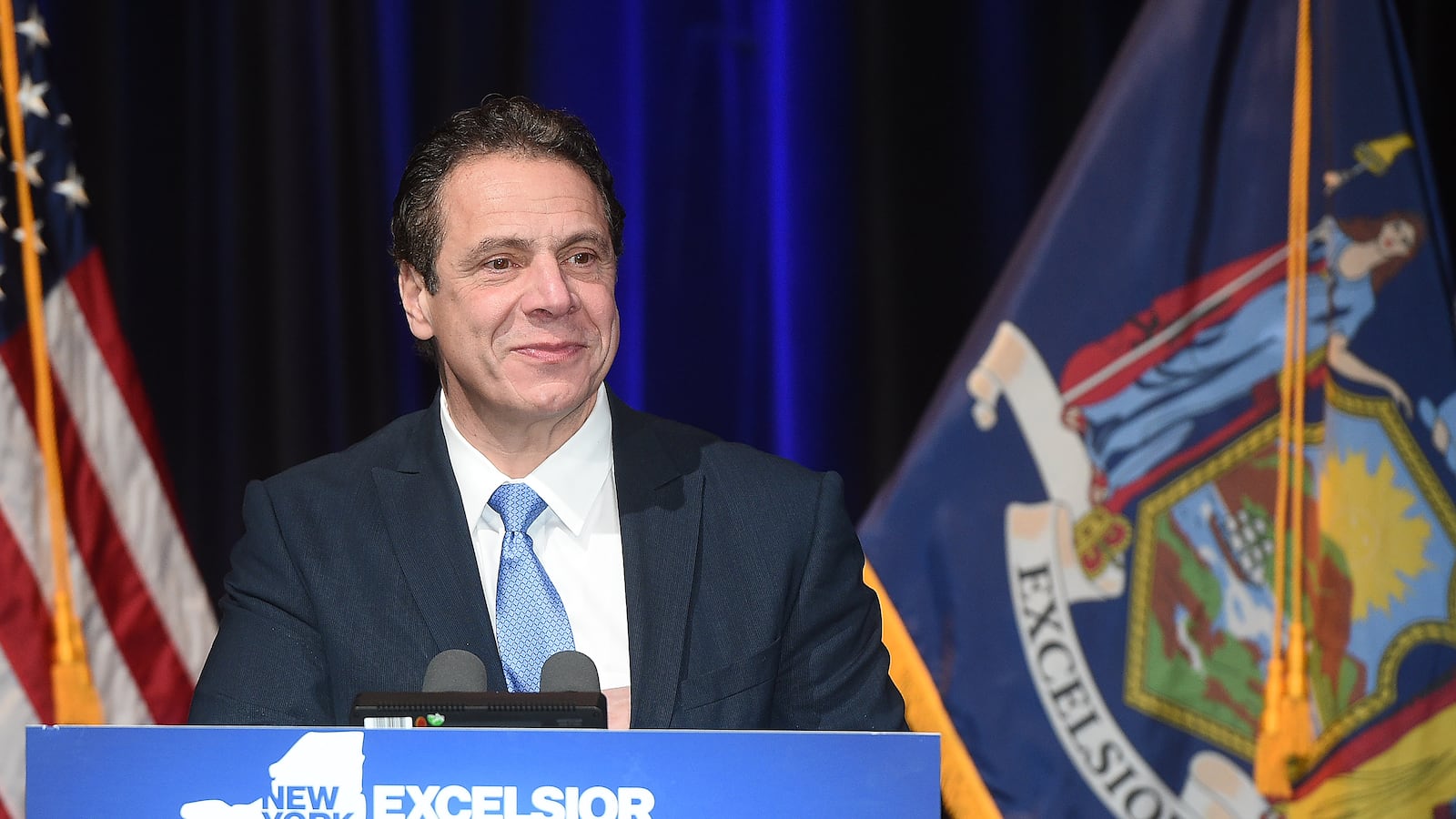Gov. Andrew Cuomo will lay out his 2018 policy agenda during his annual State of the State address Wednesday, which coincides with the start of this year’s legislative season.
Unlike in years past, education isn’t expected to top Cuomo’s legislative to-do list — especially amid the possibility of deep school-funding cuts.
Leading up to the speech in Albany, the governor has previewed 20 proposals — two of which focus on education. One involves a five-point plan to combat hunger in schools, while the other includes measures to help students who take out loans to pay for college.
Those proposals, however, are a far cry from his splashy plan last year to provide free in-state college tuition, or his efforts to more closely tie teacher evaluations to test scores, which sparked a heated policy battle during the 2015 legislative session.
His scaled-back education agenda this year comes as advocates and policymakers worry that politics in Washington and budget woes in Albany will leave less money for New York schools this year.
“There are no hot-button issues other than the funding of public education — which is the elephant in the room,” said Michael Borges, executive director of the New York State Association of School Business Officials. “You can’t do anything else without proper funding.”
Here’s the big questions hanging over Cuomo’s agenda, which marks the beginning of the wrangling between him and lawmakers that will result in a budget deal later this year.
Will Cuomo continue his retreat from aggressive education changes?
During Cuomo’s address three years ago, he famously called teacher ratings “baloney,” kicking off a bruising battle with the teachers unions that resulted in an unpopular plan to evaluate educators.
Since then, he has mostly backed away from major K-12 education initiatives. He retreated from his stance on teacher evaluations and sat by as the Board of Regents placed a moratorium on the most controversial aspects of the law. He has since thrown his weight behind the union-backed strategy of turning struggling schools into community hubs that offer social services and after-school programs, and has delved into higher education with the “Excelsior” scholarship.
As Cuomo prepares to run for re-election this year and is considered a candidate for president in 2020, he is unlikely to push controversial education plans that will spark a new round of battles.
On the issue of teacher evaluations, the Board of Regents has halted the use of student test scores in teacher ratings until until 2019. Bob Lowry, deputy director of the New York State Council of School Superintendents, said he would be surprised if the governor revisited the issue this year.
“But,” he added, “I’m not prepared to rule it out either.”
How will funding changes affect this year’s agenda?
New York is bracing for a trio of school-funding challenges that could rein in Cuomo’s ability to boost education spending this year.
The state faces a projected $4.4 billion state budget deficit even as the $1.5 trillion tax overhaul signed into law by President Trump last month is expected to hit tax-heavy states like New York especially hard. At the same time, the Trump administration and Republican lawmakers are calling for major cuts in federal spending.
In response, New York’s Board of Regents, who set education policy, have requested a more modest budget increase this year. Meanwhile, state Senate Majority Leader John Flanagan, a Republican, said in a statement that “spending restraint should be a top priority.” And Assembly Speaker Carl Heastie, a Democrat, cited funding threats from Washington as a top concern heading into the 2018 legislative season.
Cuomo is only unveiling his policy priorities Wednesday. His proposed budget, which will include the total amount he wants the state to spend on education, will come later.
Will Cuomo promote charter schools?
Last year, charter-school funding was a major sticking point in the budget process.
The showdown pitted charter-school advocates — who said they were owed a $1,500 per pupil spending increase — against the Democratic-controlled Assembly. In a compromise, the final deal increased charter funding by $500 per pupil and allows charter funding to grow along with district-school funding starting in the 2018-19 school year.
Even after the deal, advocates say charter schools still get less money than traditional ones — and are pushing for increased charter spending this year.
“I think it’s a fundamental unfairness,” said James Merriman, CEO of the New York City Charter School Center. “Should [parents] be penalized if the public school that works for their child is a charter?”
Meanwhile, advocates for district school funding argue that schools across New York State are still owed billions in education dollars under the terms of a school funding lawsuit.
What will happen in higher education?
The centerpiece of Cuomo’s 2017 speech was a plan to provide free tuition to the state’s public colleges and universities for students from low-income families.
This year, Cuomo has signaled he wants to go down a similar — albeit less flashy — track. The proposal he previewed would add new loan protections for students, including a requirement that colleges inform students annually of their loan amounts and a law that would prevent New Yorkers from losing their professional licenses if they fall behind on their student loans.
His school meal plan would require state colleges to have food pantries.
The proposals indicate the governor wants to mount a longer campaign for college affordability. After the state created the Excelsior scholarship last year, many advocates argued there was much more work to do to battle student debt and help low-income students pay for college.


